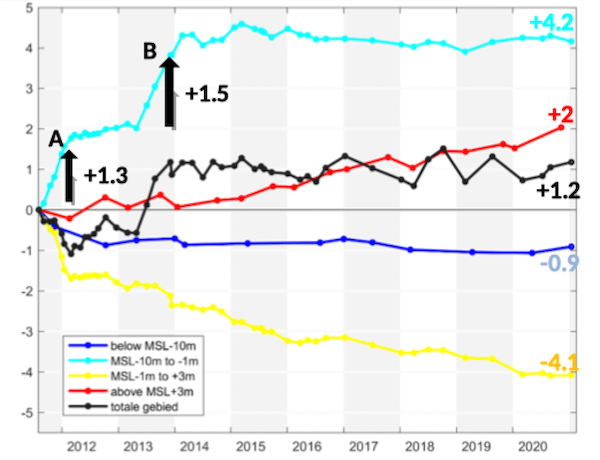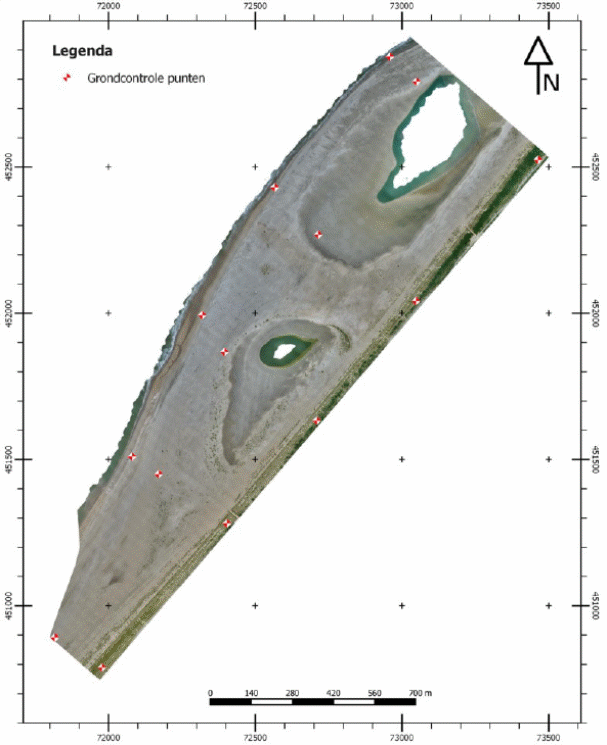B.J.A. Huisman 1*, E. Quataert 1, J.A.A. Antolinez 2, P. Damsma 3, C. van Gelder-Maas 3
1 Deltares
2 Delft University of Technology
3 Rijkswaterstaat-WVL
*corresponding author:
Introduction
The Sand Motor is the most distinguishable sand nourishment that has been introduced in the last 10 years. Its sheer size of 21 million m3 and ability to support also natural and recreational functions (Huisman et al., 2021a) is making it a landmark development that can even be seen from space.
Unique data collection
The Sand Motor bathymetry has been monitored extensively using jetski surveys, quad surveys, lidar planes, benthos surveys, salt and sandspray catchers, vegetation surveys and groundwater gauges. This has resulted in an impressive data set which provides us with the opportunity to investigate every detail of the development of the Sand Motor (Huisman et al, 2021a/b).
Analyses and findings
A large number of analyses have been made of the morphological changes over the 10-year timespan of the Sand Motor, which among others provided us with a detailed insight in the sediment balance of the Delfland coast and local embryonal dune growth. Locally the Sand Motor has spread its sand surprisingly over a relatively small area (60% within 1.5 km) as a result of wave-driven transport. The balance of the larger area could also be closed, showing a net northward transport of approximately 100,000 m3/yr at Scheveningen, although this varies substantially per year. Noticeable is the dune growth at the Sand Motor (14 m3/m/yr), which is rather similar to the rest of the Delfland coast (13 m3/m/yr) due to catchment of sand by the lagoon. Also, the lagoon entrance was very dynamic.
Volume changes after construction of the Sand Motor [10 6 m 3


Figure 1: Temporal development of the sediment volume of cross-shore regions of the Delfland coast (left) and Lidar / ortho-photo of the Sand Motor using a drone (at dm resolution).
Huisman, B.J.A., Wijsman, J.W.M., Arens, S.M., Vertegaal, C.T.M., Van der Valk, L., Van Donk, S.C., Vreugdenhil, H.S.I., Taal, M.D. (2021a). 10-years evaluation of the Sand Motor. Results of the Monitoring- and Evaluation Program (MEP) for the period 2011 to 2021. Deltares report 11201431-003-ZKS-0014, commissioned by Rijkswaterstaat.
Huisman, B.J.A., Quataert, E. (2021b). Sedimentbalans Delflandse Kust 2011-2021. Analyse van de morfologie bij de Zandmotor. Deltares report 11201431-003-ZKS-0013, commissioned by Rijkswaterstaat.
I. Surname1*, F.N. Another-Surname2 , Y. Next-Surname2
1 University Name, Country; 2 Organization Name, Country
* Corresponding author: mail.name@organization.org


